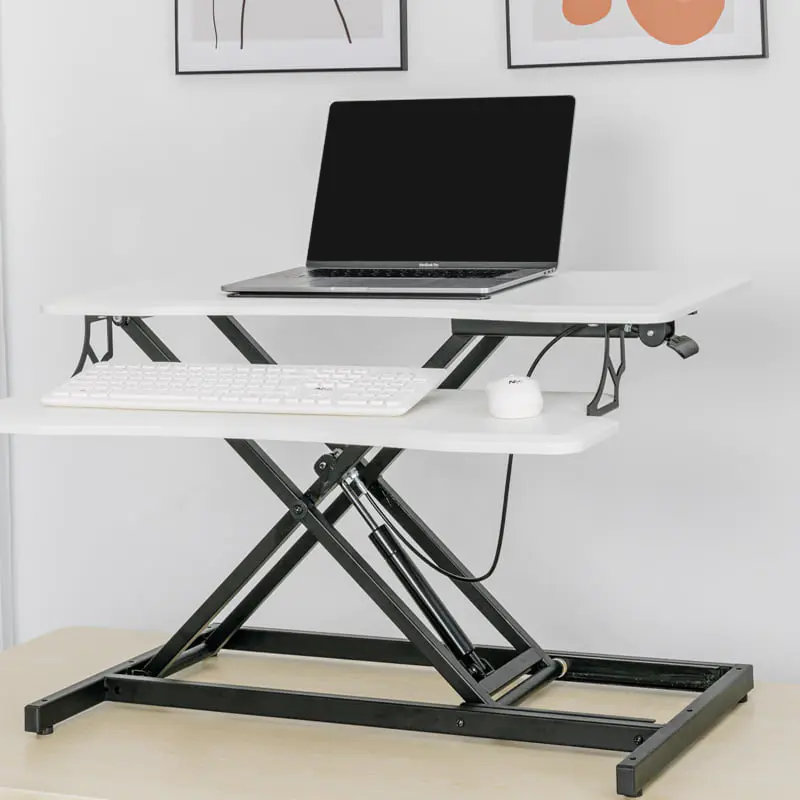Content
1. Why do you need a standing desk converter with keyboard?
Reduce the harm of long sitting: Standing office can improve blood circulation and reduce the risk of obesity, diabetes and cardiovascular disease.
Relieve shoulder and neck fatigue: The adjustable height design puts the screen and keyboard in the best position to avoid hunchback and cervical pressure.
Improve concentration: When standing, the brain is more oxygenated, the thinking is clearer, and the work efficiency is higher.
Flexible posture switching: One-button lifting, switch between sitting and standing at any time to adapt to different working states.
Save space: No need to replace the entire desk, directly place it on the existing desktop, economical and practical.
2. How to choose a standing desk converter that suits you?
Stability: Ensure a smooth lifting process and strong load-bearing capacity of the keyboard support.
Adjustment range: Suitable for different heights to avoid discomfort when bending or raising arms.
Material and durability: Aluminum alloy or high-strength steel is preferred, and it will not deform after long-term use.
Additional functions: such as USB interface, display stand, anti-slip design, etc., to enhance the user experience.

3. Five advantages of standing office: Say goodbye to sitting for a long time and embrace a healthy and efficient working method
Reduce the health risks brought by sitting for a long time
Reducing the risk of chronic diseases: Sitting for a long time is closely related to obesity, diabetes, and cardiovascular diseases. Standing can promote blood circulation and reduce fat accumulation.
Improve metabolism: When standing, the muscles continue to move slightly, helping to stabilize blood sugar and cholesterol levels.
Relieve shoulder, neck and back pain
Correct bad posture: Sitting for a long time can easily lead to hunchbacks and forward cervical spine. Standing office forces the body to remain naturally upright and reduce spinal pressure.
Prevent lumbar disc herniation: The pressure on the lumbar spine when sitting is 1.5 times that of standing. Standing can effectively reduce the burden on the waist.
Improve concentration and work efficiency
The brain is more adequately supplied with oxygen: When standing, cardiopulmonary activity is enhanced, blood and oxygen are more easily transported to the brain, and thinking is clearer.
Reduce fatigue: Sitting can easily make people drowsy, while standing can keep people alert, especially suitable for the afternoon when efficiency is low.
Promote calorie consumption and help control weight
Consume 50-100 more calories per hour: Standing consumes about 10%-15% more calories than sitting, and long-term persistence helps weight management.
Reduce "office buttocks" and "small belly": avoid excessive accumulation of fat in the abdomen and buttocks.
Flexible switching postures to adapt to different work needs
Alternating between sitting and standing is the most scientific: experts recommend standing for 15-30 minutes for every 30-60 minutes of sitting, and a lifting table or converter can easily achieve this.
Suitable for meetings, creative discussions and other scenes: body language is richer when standing, and team collaboration is more efficient.

 English
English 中文简体
中文简体 日本語
日本語 한국어
한국어 Español
Español
 Language
Language












